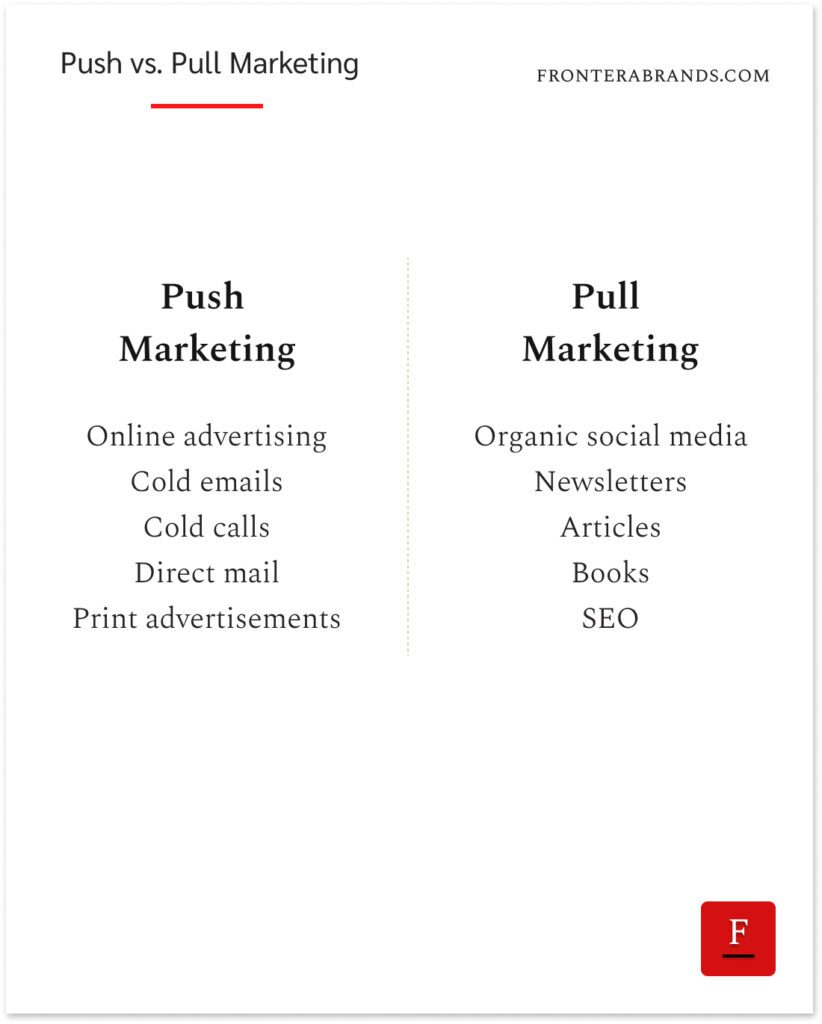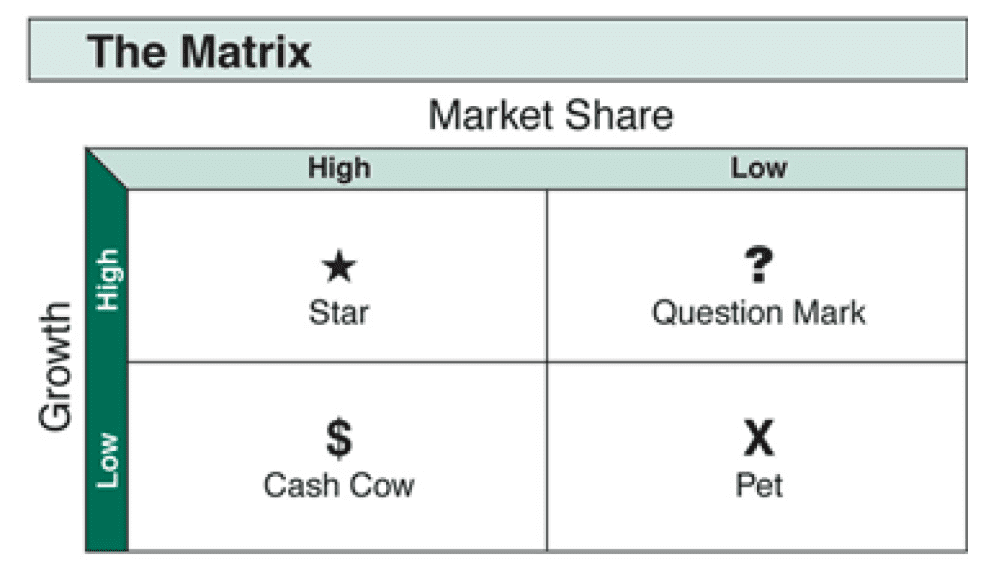We’ve talked about why most push marketing tactics fail and how to do it right.
Today, let’s focus on pull.

Here’s why most organic content doesn’t deliver results and how to fix it to attract clients:
The Soviet Union had a shortage of nails during Lenin’s government.
To increase production, Soviet officials started setting quotas for the number of nails factories to produce.
Factories wanted to avoid punishment.
So after hearing about the quotas, they reduced the size of the nails to produce as many nails as possible.
And they met their targets.
But the Soviet government ended up with millions of useless tiny nails.
So Soviet officials came up with a new plan to correct the mistake.
They updated the quota as the tonnage of nails produced every month.
Factories quickly aligned their production.
They stopped producing mini-nails and started producing huge, heavy ones.
At the end of the quarter, the factories met the new target and avoided punishment.
But it was a disaster again for the Soviet regime.
Because this time, they ended up with giant nails that didn’t help with the nail shortage.

+ Who needs such a nail?
– It doesn’t matter, what’s important is that we fulfilled the plan for the nails.
Now, the story is an urban legend.
But it perfectly explains Goodhart’s Law:
“When a measure becomes a target, it ceases to be a good measure.”
This reminds me of how most B2B brands do pull marketing these days.
They turn measures into goals.
Followers, likes, subscribers, traffic…
And they forget the real purpose of marketing: to drive business results.
So they end up with optimized SEO articles that drive a lot of traffic but generate no clients.
Viral posts that get many likes but drive no sales.
Or followers that care about the brand’s posts but not what it sells.
So their marketing becomes like a Soviet factory.
They produce useless nails.
If you want your content to drive business results, it has to do two things:
1. Speak to the right people
Here’s the thing.
If you sell consumer products, it makes sense to go after as many people as possible.
You can sell deodorant or chocolate to the masses.
But for a B2B brand, 99% of the people out there are irrelevant.
They can’t buy from you.
That’s why focusing on the number of followers or likes doesn’t make sense.
Your buyer pool is tiny.
That means you’ll have fewer followers, fewer likes, and drive less traffic by nature.
But that’s okay, as long as you speak to the right people.
So what does that mean for your content?
Well, to pull in your potential buyers, don’t design your content to reach as many people as possible.
Design it to reach the right ones.
So once you have your ideal client profile clear, speak to their specific problems.
Show you understand their specific context and how to improve their condition.
This specificity will mean your content won’t resonate with 99% of the people out there.
But it will resonate with your buyers.
So among all the average, generic content, yours will make them say: “These people get it.”
And that’s the purpose of doing marketing.
2. “Pull” with a message
In 1964, Boston Consulting Group (BCG) was trying to gain a foothold in the market as a young consultancy firm.
One challenge they had was reaching more potential clients.
Incumbents like McKinsey and Booz Allen Hamilton had large teams.
So it was impossible for BCG to compete with them using sales teams or traditional networking in a pre-Internet era.
But BCG’s founder, Bruce Henderson, noticed a more scalable way to compete with them.
Those large firms had journals to share insights with their clients, like McKinsey’s Quarterly.
Henderson thought it would be ideal for their small team to reach more clients.
So they started sending memos to executives and called them Perspectives.

At the time, McKinsey and other big firms called themselves management consultants.
And they used their journals to share ideas about a wide range of topics, as management could be about anything.
But BCG positioned itself as a business strategy consultancy.
It was a new term.
And BCG wanted to define what it meant.
So they used Perspectives as a propaganda channel.
BCG consultants started sharing strategy frameworks and insights to help executives think strategically to win.
They turned “business strategy” into something concrete using their content.
Guess what happened?
Executives started reading Perspectives, sharing it with their peers, and paying attention to this young consultancy.
They bought into BCG’s ideas and wanted to apply them.
So more and more corporations started hiring BCG.
In one edition, Henderson wrote an article titled The Product Portfolio and introduced BCG’s Growth-Share Matrix.
It made BCG even more famous as prominent executives used it to make product decisions for decades.
So BCG grew with their “content marketing” before it was called content marketing.
And thanks to that, they became a giant consultancy firm.

Think about it.
Why did BCG’s Perspectives work so well?
Because they didn’t just publish content.
They shared ideas that their potential clients couldn’t find anywhere else.
Their content was loaded with a message based on their positioning.
It showed the market that BCG was different because their ideas were different.
That’s why their content influenced buyers.
Compare that to how many executives see “content” these days.
“Publishing content” is an item on a marketing checklist.
So they hire an agency or a few writers to publish content.
They do it for the sake of doing it.
And they end up with content that could be created by any of their competitors.
They forget that buyers associate the quality of your content with the quality of your work.
Publishing average content signals being average.
It devalues everything else you do.
That’s why “publishing content” shouldn’t be the goal of pull marketing.
The goal should be to influence potential clients.
And that’s only possible when your content is loaded with a message.
When your content conveys your brand’s positioning and ideology.
Luckily, despite all the hype around “publishing content,” the bar is still low.
Most B2B brands just talk.
They don’t convey a message — because they don’t have one.
So if you want to influence buyers with your content, stop seeing it as a task.
Use it as a channel to deliver a message.
–
Enjoyed this article?
Then you’ll love the How Brands Win Newsletter.
Get the “7 Positioning Sins That Cost B2B Brands Millions” guide when you join. It’s free.
